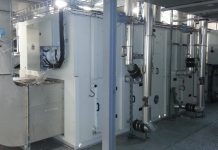Embedded system computers are the backbone of today’s industrial world. As a result, it is important to understand what makes them tick, so that you can make an informed decision when buying one.
Here are some of the key characteristics of embedded systems, read more ahead.
Single-Functioned
Embedded systems are designed to do a specific task, and they typically have a dedicated purpose. Embedded systems can be found in many different devices, including cars, airplanes and medical devices. These systems are created to perform one or more tasks, such as controlling the speed of a car’s engine or monitoring the temperature of an infant’s incubator.
Tightly Constrained
Embedded systems are constrained by their environment, so they don’t have room for error when it comes to processing speed or memory capacity. For example, an embedded system in a car must be able to run with little power and use only enough memory as necessary for its purpose — perhaps just enough for basic navigation functions. The tight constraints on an embedded system also limit its operating temperature range and storage capacity requirements.
Reactive and Realtime
In embedded systems, reactive programming is the most common form of concurrency. The term “reactive” comes from the theory of reactive systems, in which a system reacts to external stimuli, such as events or changes in state. In reactive systems, the flow of control does not pass-through sequential statements but rather is caused by events (triggers).
The main feature of reactive programming is that it can be implemented on top of an event loop. The event loop receives events from sources (other threads, timers or interrupts) and processes them one at a time until there are no more events to process.
Microprocessor based
Microprocessors have become more efficient over time so that they can now run many tasks simultaneously while consuming less power than ever before. However, this isn’t enough for many modern embedded systems which require more processing power than what a regular microprocessor can provide on its own. This is why most embedded systems use multiplexed processors which allow them to handle multiple tasks at once by splitting them up into small pieces which can be handled by individual processors.
Connected
Embedded systems are connected to other devices or networks over wired or wireless connections. This means they can share information with each other and exchange data in real time, which makes them much more useful than single-purpose devices like watches or mobile phones that don’t have this ability. For example, your car’s GPS navigation system uses this feature when it shows up on your dashboard display as you drive along so that it knows where you are at all times.
Hardware Software Systems
Embedded System Computers typically consist of hardware software systems that allow them to perform specific tasks. The hardware includes components such as circuits boards or chipsets that allow the computer to perform required tasks such as reading information from sensors or sending information over networks. The software controls how these components interact with each other and with outside devices such as printers or keyboards.
Conclusion
Embedded system computers are the brains of a wide range of devices, from those we use every day to more complex items that may collect and transfer data without the user’s knowledge. They can regulate, monitor, and record data in a very efficient and cost-effective manner.
As they are tuned for embedded system functions, they represent a significant improvement over previous generations. The primary components of an embedded computer are the central processing unit, memory, and input/output peripherals. Each component contributes significantly to the functionality and performance of the computer and its embedded program.









